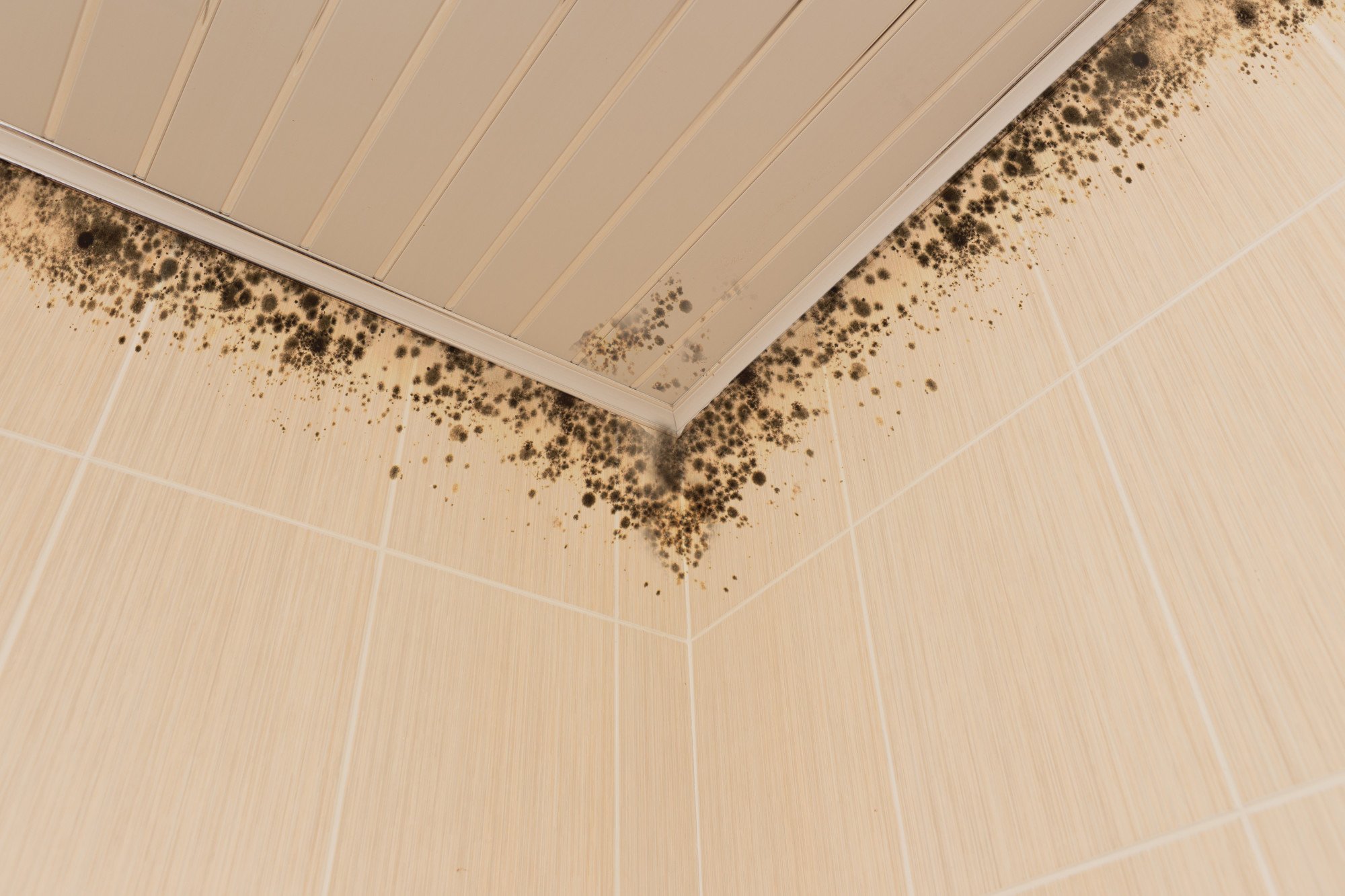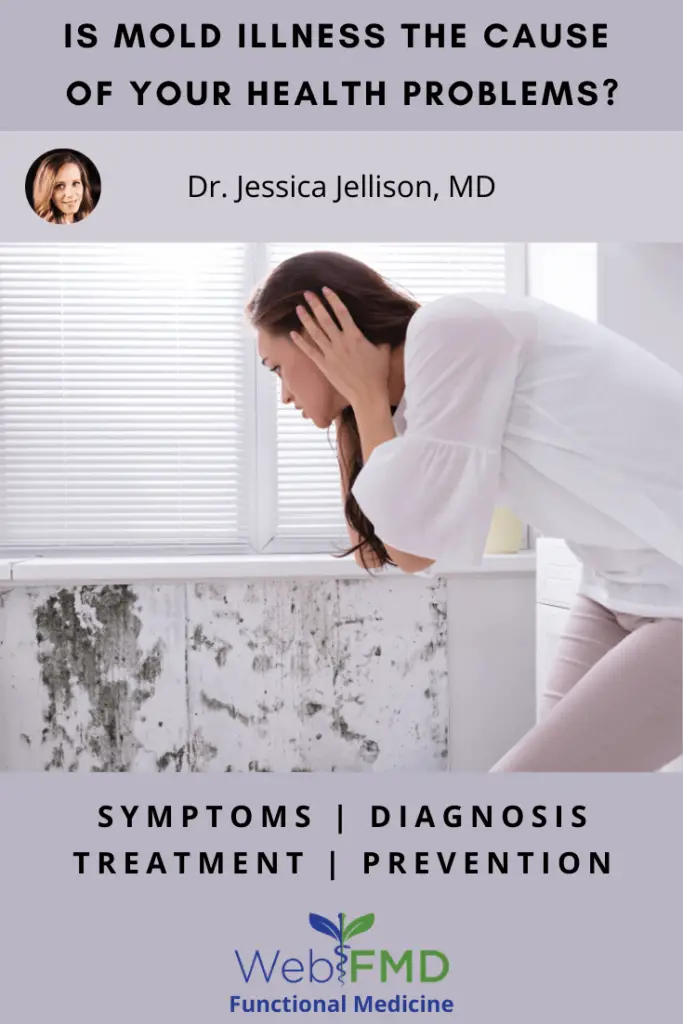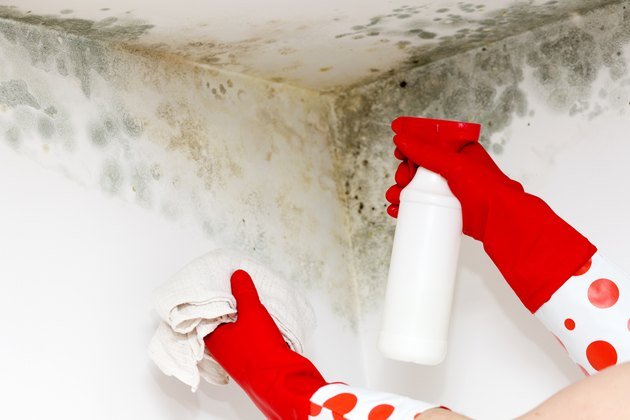Black Mold Symptoms And Health Effects
Learn about black mold symptoms and health effects so that you can identify indicators of black mold exposure and black mold poisoning.
A mold infested room of an old building.
Dariusz Majgier
Mold in homes can be a costly and dangerous problem, particularly when infestations of toxic black mold occur. The symptoms and health effects of black mold exposure and black mold poisoning cover a wide range of health problems, but understanding the indicators can help keep you and your family safe.
Toxic black mold, or Stachybotrys chartarum, as it’s known to scientists, can release spores as it feeds on organic materials in common household materials like drywall, carpet, insulation or sub-flooring that have been exposed to moisture. These spores, if ingested or inhaled, can cause a range of unpleasant and even dangerous symptoms in humans.
What Are Toxigenic Reactions To Mold
A toxigenic mold produces toxins. There are approximately 20 common toxins that mold is known to produce.
When you ingest or inhale these toxins, your chance of becoming ill increases. Upon exposure to toxigenic mold, you may experience the following effects:
- Mucous membrane irritation
- Acute/chronic central nervous system disorders
- Hormone disorders
- Cancer
Another serious condition associated with mold exposure is hypersensitive pneumonitis. This is an acute, or chronic, lung disease brought on by inhaling fungal antigens.
Testing For Mould In Your Home
Where mould is visible, it is generally not considered necessary to test for it in the home. However, not all mould is visible, as contamination may be in cavities or the ceiling. Generally, if you can see or smell mould, you need to clean up and remove the mould immediately, as mould can damage surfaces it grows on.
If you suspect mould contamination but cannot find the source of the problem, or if you have already taken measures to prevent mould from growing and you are still having problems, you could employ an occupational hygienist or environmental health and safety professional. For a fee, these professionals can provide specialist mould testing and consultancy services.
Read Also: How To Kill Mold In A Basement
Less Common Black Mold Health Issues
While we know these health problems are less likely to result from exposure to mold, they can happen, or at least some people believe these symptoms may occur as a result of black mold exposure. We dont know how common they are, just that they are not as common as other symptoms listed above. Less common health problems sometimes caused by exposure to black mold include:
- Fatigue
You May Like: What Would Cause Mold On Ceiling
Sneezing And Nasal Congestion

While many things can trigger sneezing, its also a symptom of mold toxicity that should get your attention. If youve never had allergies or hay fever symptoms and youre positive you dont have a cold, those sneezes could be indicative of mold exposure.
Sneezing is the immune systems standard response to allergens. It could also be a warning sign that your home has a mold problem.
You May Like: Remove Mold From Canvas
Also Check: How To Clean Mold In Basements
Start A Neural Retraining Program
Certain areas of the body are more vulnerable to mycotoxins, and the brain is one of them. Certain areas of the brain can end up in a chronic fight or flight response and according to McElroy, No pill can fully stop this response, so we have to retrain certain neural pathways to put the response into a heal and rest state. She often recommends Annie Hoppers Dynamic Neural Retraining System. This is essential for full recovery, says McElroy.
What Are The Signs Of Mold In Your House
Musty smells are a tell-tale sign of mold. Another common indicator is visible signs of water damage.
As mentioned earlier, mold grows fast. Within 24 hours of a water leak, or a flood, mold will begin to take hold. This mold can grow on anything thats humid walls, floors, ceilings, furniture, and even wet laundry.
When there is a chance of mold, its important to have a professional in to test. Professionals qualified to do environmental investigations can:
- Check the surfaces of your house for mold
- Test the air for spores
- Help you to identify sources of moisture
- Identify where the mold is growing and help you decontaminate your house
- Use natural enzymes to kill mold spores
If you dont get rid of all sources of mold, you risk getting sick from it.
Recommended Reading: How To Get Rid Of Mold On Shower Ceiling
How Do Molds Get In The Indoor Environment And How Do They Grow
Mold is found both indoors and outdoors. Mold can enter your home through open doorways, windows, vents, and heating and air conditioning systems. Mold in the air outside can also attach itself to clothing, shoes, and pets can and be carried indoors. When mold spores drop on places where there is excessive moisture, such as where leakage may have occurred in roofs, pipes, walls, plant pots, or where there has been flooding, they will grow. Many building materials provide suitable nutrients that encourage mold to grow. Wet cellulose materials, including paper and paper products, cardboard, ceiling tiles, wood, and wood products, are particularly conducive for the growth of some molds. Other materials such as dust, paints, wallpaper, insulation materials, drywall, carpet, fabric, and upholstery, commonly support mold growth.
What Are Pathogenic Reactions To Mold
Pathogenic reactions to mold exposure are divided into three categories:
Don’t Miss: Removing Black Mold From Ceiling
How Does Mould Affect Health
Mould associated with damp buildings can trigger nasal congestion, sneezing, cough, wheeze, respiratory infections and worsen asthma and allergic conditions.
People who are more susceptible to these symptoms and other serious health effects include those with:
- weakened immune systems
- chronic, obstructive, or allergic lung diseases.
You should seek medical advice if you are concerned about the effects of mould.
Could Your Symptoms Be From A General Mold Allergy
Regardless of the species of mold in question, symptoms of a mold allergy can appear very similar, especially when looking at many individuals. So if you see black-colored mold and experience allergic symptoms, it could be Stachybotrys, or it could be another species of mold. That said, the same person can react differently to different molds. For example, one person may have severe dry eyes in response to a Cladosporium exposure, while Aspergillus exposure may cause wheezing and asthma-like symptoms.
Read Also: How To Get Rid Of Mold Spots On Bathroom Ceiling
What Causes Mould To Grow Indoors
Mould only grows when there is sufficient moisture on a surface or humidity in the air. Common causes include:
- leaky roofs and walls including and blocked gutters and downpipes
- leaky plumbing
- condensation from cooking, showering, clothes drying and from breathing inareas with poor air circulation eg cupboards and corners and furniture against uninsulated outside walls. Avoid conditions encouraging mould growth, by using heat, insulation and ventilation. The cheapest and easiest way of reducing moisture and humidity levels is by ventilating a room by opening a door or window. Use exhaust fans where available.
How Does Mold Impact Our Health

As mentioned above, some types of mold produce mycotoxins nasty little spores that cannot be seen without a special equipment. For example, one often found toxic type of mold is the infamous black mold.
In most cases, mold spores will weaken your immune system enough that you become vulnerable to many diseases. How much of a harmful effect mold will have on your health will mainly depend on the time spend in mold presence. The longer you live inside a moldy house and breathe in mold spores, the greater the risk for you and, of course, your loved ones.
Ensuring that your home stays mold free is one of the best ways to prevent diseases and infections such as tuberculosis.
You May Like: Black Mold Ac Vents
Is There A Test To Determine If I Have Been Exposed To Mold
Some physicians have recommended testing for mold-specific antibodies. Thepresence of antibodies only indicates that you have been exposed to a substanceat some time. It does not tell you when you were exposed, where the exposuretook place, or how much of the mold you were exposed to. Having a positive testfor mold-specific antibodies alone is generally considered insufficient toprove that health effects reported by individuals in moisture-damaged buildingsare caused by exposure to mold.
How Do You Test For Toxic Mold Exposure
All in all, there is no simple way to diagnose mycotoxin illness, says McElroy. But testing is typically the first step. She prefers to start patients with at-home tests and also recommends a home inspection by a certified mold inspector. should only be ordered, in my opinion, once the environment is evaluated for the source of mold, explains McElroy. The most direct way to test for mold toxicity is a urine test that measures for metabolites of mold and mycotoxins as well as glutathione levels . That said, as McElroy explains, I never place the entire diagnosis of mycotoxin illness on tests alone. Why? Because mold tests have some major drawbacks, including:
- False negatives and false positives are common
- They are not covered by insurance
- You cant test all toxins there are hundreds
- The levels found on tests dont necessarily correlate with the severity of symptoms
These tests clearly arent perfect. In fact, McElroy says she has seen patients who were really sick have almost nothing show up on the test while the healthy spouses of those same patients register values off the charts, so having a clinician thats willing and able to do some extra investigation into symptoms of mold and toxic mold exposure is key.
Read Also: Sanding Mold Off Wood
What Causes Nasal Congestion
Black Mold Something Of A Misnomer
Before we go any further, lets clear up the confusion about black mold. When you read about toxic black mold it is kind of misleading. The thing is dangerous and toxic mold is not just black, it can be many different colors. Toxic molds can appear to be green, yellow, brown, and black.
All molds have the potential to cause irritation and allergy symptoms. However, some molds can also cause much more dangerous health problems. Some molds, but not all, produce mycotoxins. Not all molds are toxic, but many are.Mycotoxins can cause health problems ranging from poisoning to cancer.
Read Also: How To Remove Mold From Basement
Does Mold In The Home Cause Health Problems
Mold and health problems. moisture inside homes can lead to mold growth in different spaces. This, in addition to damaging structures, can cause health problems.
The presence of mold in the home causes problems that go far beyond structural damage. While it is true that its smell and the stains it creates on the walls and ceilings are the most notable elements, it should be noted that it causes certain health problems to appear over time.
According to information released by the Center for Disease Control and Prevention, exposure to damp, moldy environments causes respiratory symptoms and allergic reactions in some people. It can also trigger attacks in patients with asthma.
Contents
What Can You Do About It
If you or anyone in your family has been exposed to indoor mold, the best first step is to talk to a health professional and make sure that there is no risk of respiratory issues. If symptoms have already started to appear, your doctor may want to conduct follow-up observations to make sure that the mold hasnt spread.
Equally important is preventing further mold exposure by stopping the growth and removing the colony in your home. Sometimes this can be as simple as decreasing the humidity and improving air circulation in the affected area. Other times, though, you might have to resort to more invasive tactics, which we will discuss in other posts.
As with any health risk, if you start to see the symptoms get worse, dont hesitate to seek medical advice. After all, its better to get treated now than to have to deal with the effects later down the road.
Most important is to make sure you 100% get rid of the mold problem that is affecting your health. If youre looking for an experienced mold removal team in Concord NH, call us immediately to come take care of things for you.
Read Also: How To Get Rid Of Black Mold On Bathroom Ceiling
For Help With Mold Removal
To prevent exacerbating your mold-related illness, we recommend finding a professional to assist with mold removal in your home. Youll avoid further exposure to mold and also make sure all traces of mold are removed from your home. Many mold removal professionals offer free in-home consultations, so you can benefit from some expert advice with no obligation. An experienced professional can advise you about how to protect yourself from mold during the mold removal process, even if you opt to do the cleanup yourself, and can offer tips on how to prevent mold in the future. To find experienced mold removal professionals in your area, just follow the link.
Stop The Mold Exposure

First and foremost, in order to start healing from mold illness, it is absolutely critical to make sure the environment is safe. Keep in mind, mold inspection and mold remediation require a level of expertise that goes beyond standard repair. So it is important to work with professionals specialized in mold.
If mold is found in the inspection, it is best not to be present in the house during mold remediation, especially if you know your home has Stachybotrys or Chaetomium. If not done properly, disturbing the mold can release more mycotoxins into the air which can worsen your symptoms.
On that note, walking away from your home during remediation is never an easy thing to do. If its not possible, cleaning a safe room may help with some symptom relief, although it is not a permanent solution. Mycotoxins can easily travel through the air, and you are still going to have some exposure to other areas in the house that may have a mold problem. Work with your provider and together explore the next best steps.
Recommended Reading: How To Clean Mold From Ceiling
Consulting The Doctor Is Important
Exposure to mold does not always cause health problems. Nevertheless, it is recommended to avoid its presence in the house. Also, you should consult the doctor if you have symptoms of allergies or respiratory illnesses. Remember that they can lead to serious complications.
Although mold is not always responsible, it is still a factor that tends to make symptoms worse. It is, therefore, necessary to follow the professionals recommendations and resolve the humidity problems as quickly as possible.
How Common Is Mold In Buildings
Molds are very common in buildings and homes. Mold will grow in places with a lot of moisture, such as around leaks in roofs, windows, or pipes, or where there has been flooding. Mold grows well on paper products, cardboard, ceiling tiles, and wood products. Mold can also grow in dust, paints, wallpaper, insulation, drywall, carpet, fabric, and upholstery.
The most common indoor molds are Cladosporium, Penicillium, and Aspergillus. We do not have precise information about how often different molds are found in buildings and homes.
Recommended Reading: How To Remove Mold From Bathroom Ceiling
What Are Symptoms And Signs Of Mold Exposure
Molds produce irritating substances that may act as allergy-causing substances in sensitive individuals. Furthermore, some molds produce toxic substances known as mycotoxins, but mold itself is not poisonous or toxic. The term “toxic mold,” therefore, refers to the fact that certain kinds of mold can produce mycotoxins. The conditions under which some molds produce toxins are not understood, and the presence of mold, even a mold that is capable of producing toxins, does not always imply that toxins are being produced or that a health risk or problem is present. Mold may not cause any health problems, or it may lead to allergy or other symptoms in people, including adults and children, who are sensitive to molds.
Allergic reactions to mold are the most common health effects of mold and are therefore the greatest health risk related to mold. Allergic reactions may happen immediately or develop after a period following exposure. Both growing mold and mold spores may lead to allergic reactions. Symptoms and signs of mold allergy may include
Mold or mold spores may cause asthma attacks in people who have asthma and are allergic to mold. Even in some non-allergic individuals, mold can cause symptoms of irritation in the eyes, skin, and airways. For example, the “black mold”Stachybotrys, along with some other types of mold, produces toxins known as mycotoxins that can cause irritation of the skin and airways in susceptible individuals.
